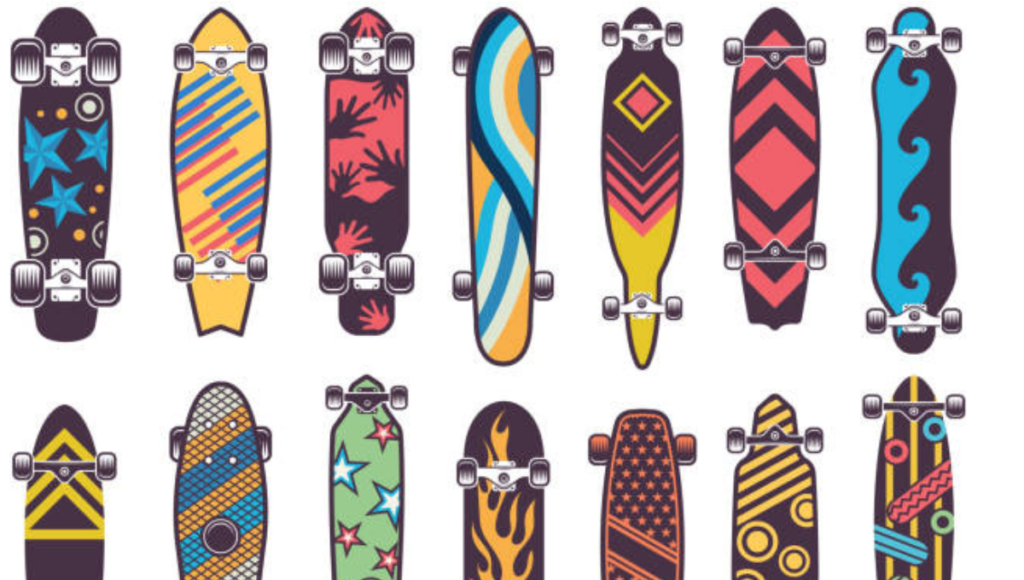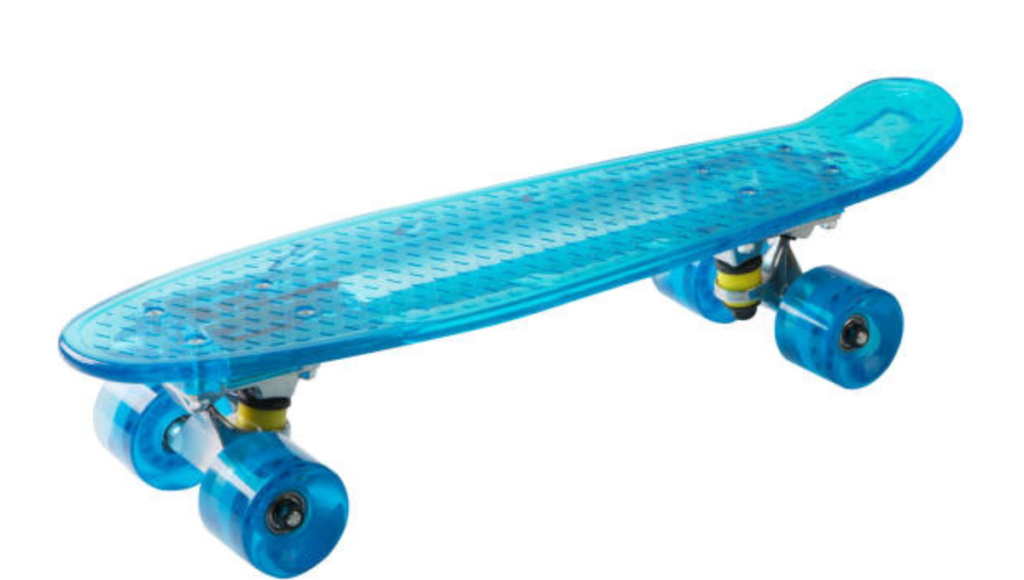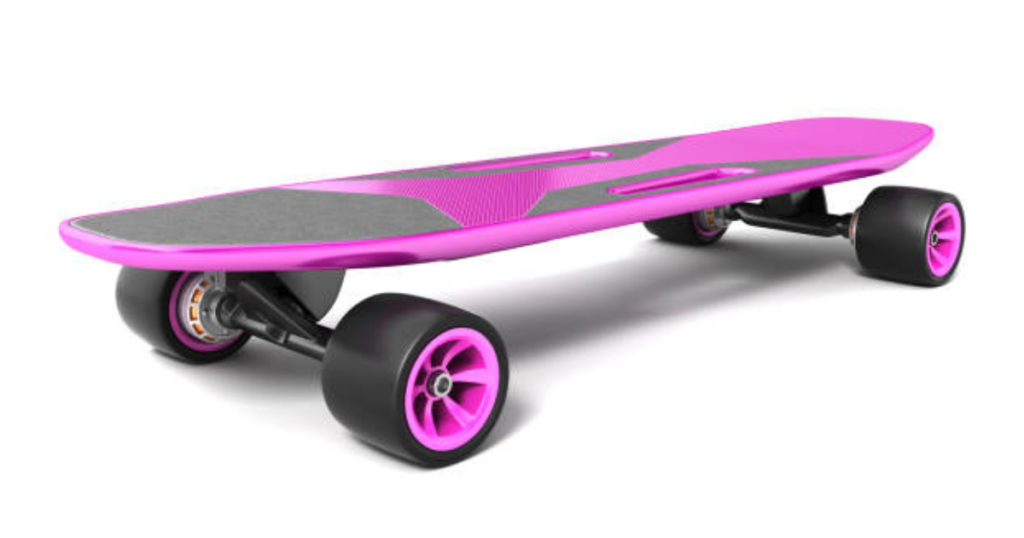Longboarding and Skateboarding may feel analogous to the untrained eye, but if you look closely, you’ll find that they’re relatively different.
The two forms of sidewalk surfing are completely different. There’s a debate about which is better or more fun.
Still, you need to know the main differences and advantages of both If you are stuck in a cul-de-sac, and you are not sure which to choose. Let’s take a look.

Origin of skateboard and longboard
Let’s touch on its history to understand the difference between a longboard and a skateboard. Browsers in the early 1950s really liked the feeling of catching swells. Skateboarding began with cutting out rustic boards and installing bus under them.
Skateboarders made the board lower when they noticed that the board was too big and flat to do the trick. In the 1990s, browsers realized this board was too small for cruising and not like a surfboard. So, they reworked the design and size of the skateboard and came to the current longboard. Click here
Cons and pros of skateboarding vs. longboarding
Longboards
Pros
First, let’s look at the advantages of longboards. Unlike most skateboards, longboards are 33 – 60 elevation long and have a large and soft wheel, making them comfortable and stable. Longboards are a great option for newcomers because of these features, and they’re more tolerant and easier to ride than standard skateboards. Longboards are big and soft, making them a great choice for skateboarders who want to use them substantially for cruising and carrying.
Cons
Longboards have their faults as well. Longboards frequently warrant the dexterity and reactivity of a typical skateboard. This is one of the biggest downsides of longboards. Also, longboards are heavier than typical skateboards and are harder to store and carry, which may be inimical for those who need to carry them.
Skateboards
Pros
Now, let’s examine the advantages of traditional skateboarding. Traditional skateboards are frequently more compact, with sundeck lengths of 28 – 33 elevation. The range of the truck is narrow, and a small and durable wheel characterizes it. Compared to longboards, traditional skateboarding is a great choice for riders who want to master tricks, as it’s more nimble and responsive. Traditional skateboarding is a particularly good option for riders who want to use skateboarding on road skates and skate parks because of its small size and tough bus.
Cons
The disadvantage of classic skateboarding is that it’s difficult for newcomers to ride because it’s small and hard to wheel. Due to these characteristics, it takes time to move from point A to point B, and the difficulty position becomes advanced. In addition, compared to longboards, they generally warrant stability and aren’t practical for transfers and long-distance cruising.
Component comparison: Decks
Skateboard balconies are frequently kept fairly small for easy tricks, although their range varies depending on the size of the skater’s shoes. This may vary, but in general, the skateboard is 28 – 32 elevations long, 7 – 10 elevations wide, and the wheelbase is about 14 – 15 elevations.
The biggest difference is the lip at the reverse of the sundeck, the so-called tail. This small lip makes it easier to pop and flutter.
Then, here’s an illustration of the most common skateboard sundeck shape. The sundeck of the skateboard is generally made of 7-bias maple material. Still, numerous brands now produce maple and fiberglass balconies. These are advanced in strength.

For example, Powell’s reprint deck is wide, easy to pool ride, and general cruising, but also tricks.
The longboards are longer and wider than the skateboard deck, with an average length of 33-60 inches and a width of 8.5-10 inches, and the wheelbases vary. Longboards come in many forms besides the common skateboard decks. The most common longboard shapes include drop-through/drop decks, pintails, top mounts, drop-throughs, and more. But there are many others.
The shape and the longboard deck are made of many types of material. They include bamboo, fiberglass, carbon fiber, maple, cork, and composite.
Longboards don’t have skateboard-like lips, but technically, they can do a lot of tricks like pop-cubit, finger-flip, kick-flip, and so on!
Component comparison: Trucks
Skateboard tracks are narrow, small, and light. The Traditional King Leg (TKP) design has also been espoused. This design is generally not suitable for turns but is good for longboards. There are wide and heavy exchanges designed for turns and figures. Utmost ultramodern longboards use rear shelling leg tracks (RKP). This track design is ideal for sculpturing because it has many turns per degree of inclination.

Component comparison: Wheels
The skateboard has a hard, small wheel that is perfect for a trick. The reason for choosing a harder and lower wheel is that it’s lighter and harder, so it can roll and accelerate snappily in smooth grind demesne conditions. In addition, the hard machine is slippery, and the error when landing a trick or performing grinding is large.
The long-boarded grip wheel falls if it lands on the square and misses the manager. The longboards come with a large, soft machine ideal for carrying. This will help manage the nasty cracks and jewels on the road. Longboard machines can easily pass and keep high speed longer.
KEY DIFFERENCES BETWEEN SKATEBOARDING AND LONG-BOARDING
BOARD SHAPE AND SIZE
One of the most noticeable differences between skateboarding and longboarding is the shape and size of the board. Skateboards are typically shorter and narrower than longboards, 28-33 inches long and 7.5-8.5 inches wide. The skateboard deck is usually recessed, and riders can perform tricks such as Ollie and Kick Flip.
On the other hand, longboards are longer and wider than skateboards, 35-60 inches long and 9-10 inches wide. A longboard deck is generally flatter than a skateboard and provides a stable base for cruising and carving. Longboarding and Skateboarding The shape and size of the board greatly affect the riding experience and the type of tricks and techniques that the rider can do.
Riding styles
Another big difference between skateboarding and longboarding is the riding style associated with each exertion. Skateboarding is known for its high-energy, acrobatic tricks in civic surroundings, similar to grind premises and thoroughfares. Some of the most common riding styles on skateboards are road, demesne, and Bart.
Road riding occurs on flat shells, similar to sidewalks, parking lots, and places. Skaters perform tricks on colorful obstacles similar to checks, stairs, and rails, including only kickflip and grind. Park Riding is held at a skate park designed simply for skateboarding. Skaters play tricks on a beacon or coliseum. Vast Riding does tricks with perpendicular lights and half pipes.
In discrepancy, longboards are known for their relaxed, flowing riding style, with a focus on figure, cruising, and upward racing. Long lodgers generally run on smooth shells, similar to paved roads and cycling roads. The most common riding styles on longboards include cruising, sculpturing, and upward racing.
You run at a moderate speed on a flat or slightly leaning road face when cruising. Longboarders use the large bus of the board and a stable base to glide fluently over long distances. In the figure, the board makes long-running turns on pitches and other roads by making the utmost of its rotational performance. Longboarding and Skateboarding The upwardly race is a presto, full-bloated adrenaline exertion on steep hills at speeds of up to 70 mph.
Terrain
The type of terrain used for skateboarding and longboarding is also an essential difference between the two conditions. Skateboarding generally occurs in civic areas similar to sidewalks, parking lots, and places. Skaters use the civic terrain to trick and manipulate colorful obstacles, similar to checks, stairs, and rails.
In discrepancy, longboards frequently occur on further natural terrain, similar to hills, cycling roads, and nature trails. Long lodgers use the large bus of the board and a stable base to run on a variety of road shells, including cracks, way, and rough pavement. Upwardly, races are generally carried out on steep mountain paths and other analogous terrain.
Safety
Longboarding and Skateboarding Safety is a critical consideration for both skateboarding and longboarding, as is the case for any exertion involving speed and implicit peril. Riders should always wear applicable safety outfits, similar to helmets, knee pads, elbow pads, and wrist guards. They must also be alert and conservative when running in crowded places or near obstacles.
Skateboards and longboards also have their safety preventives. Because skateboarding can involve dangerous tricks and manipulations, skaters must always be apprehensive of their capacities and limitations.
Longboards run upwardly races at high speed, so riders must acquire the chops and experience to challenge this conditioning. Longboarding and Skateboarding To help accidents and injuries, it’s essential to take the time to learn the right ways and lift within your specialized position.
Skateboarding and longboarding have some parallels, but there are also clear differences. While skateboards are characterized by high-energy riding, which plays an acrobatic trick in a civic setting, longboards are known for their relaxed, flowing riding style, focusing on cruising, sculpturing, and upward racing. The shape and size of the board, riding style, type of terrain used, and safety considerations are factors that distinguish skateboarding from longboarding.
CHOOSING THE RIGHT ACTIVITY FOR YOU
Whether to choose a skateboard or a longboard is a delicate question. Before making a decision, it’s important to consider particular preferences, riding pretensions, and specialized situations. Let’s take a close look at these factors.
Particular preference
Longboarding and Skateboarding, as for particular preferences, there are several factors to consider. The first is riding style. Which do you prefer; presto- paced specialized skateboard tricks or smooth, flowing riding on long boards? Skateboarding generally occurs on flat shells similar to thoroughfares, grind premises, and ramps. On the other hand, longboards frequently run on pitches, long pavement roads, or out-road.
Riding terrain is also an important consideration. However, skateboarding might be better if you live in a megacity with smooth pavement and curbs. However, a longboard may be more suitable if you live in an area with hills or winding roads. The size of the board should also be considered. Skateboarding is a good place for tricks and specialized riding. The longboard is long and stable, suitable for cruising and long-distance lifts.
Riding pretensions
Whether you choose a skateboard or a longboard, the purpose of riding is also an essential factor. However, longboards are frequently more suitable for stability and a smooth lift If you want to use a board for transportation or commuting. Longboards are also a popular option if you’re interested in competitive racing.
Still, a longboard is a stylish choice if you want to enjoy it as a recreation. Skateboarding is great for perfecting your chops and learning new tricks, but longboards frequently make you more relaxed and pleasurable. Longboarding and Skateboarding Numerous riders also take a break from both conditioning to keep their riding fresh.
SKILL LEVEL
Eventually, the position of ramification is the key to choosing between skateboarding and longboarding. Skateboarding requires a certain position of skill and balance to perform tricks and manipulations. Longboarding and Skateboarding Those just starting will take a long time to acquire the necessary chops. On the other hand, longboards frequently bear little specialized skill and can be fluently started. Thus, it’s a stylish option for newcomers who are just starting.
Still, it’s important to start with the basics and ameliorate If you are a freshman. For skateboards, you start with introductory riding ways and gradationally challenging complex tricks. In the case of longboards, you start with an introductory figure and turning ways and gradationally move to ride upwardly. After all, whether you choose a skateboard or a longboard depends on your particular preferences, you’re riding pretensions and your specialized position. It’s important to consider each of these factors before making a decision.
Both conditioning have unique advantages, making them the perfect way for those who want to enjoy themselves laboriously. Whether you are a freshman or an educated skateboarder, there is a commodity for everyone to enjoy in skateboarding and longboarding. Click here
Conclusion
Both Longboarding and Skateboarding offer a unique riding experience and appeal to different types of riders. Whether you prefer full adrenaline riding on a skateboard or relaxing cruising on a longboard, you can enjoy all levels of riding in both activities. After all, whether you choose a skateboard or a longboard depends on your personal preferences, you’re riding goals, and your skill level. Whichever activity you choose, always prioritize safety and have fun!

[…] to pressure cracks on a skateboardWhether, the board can withstand your weight or the force it takes to land. Also, the board may crack due to pressure if the bolts are tightly fixed. High temperatures cause defects in skateboards. The deck of the skateboard becomes thicker and also affects other parts. How to avoid pressure cracks on skateboard […]